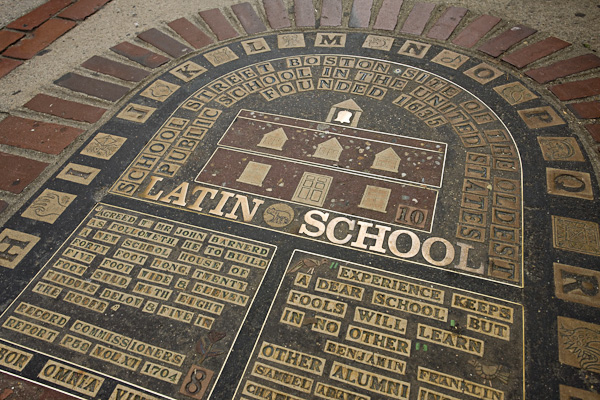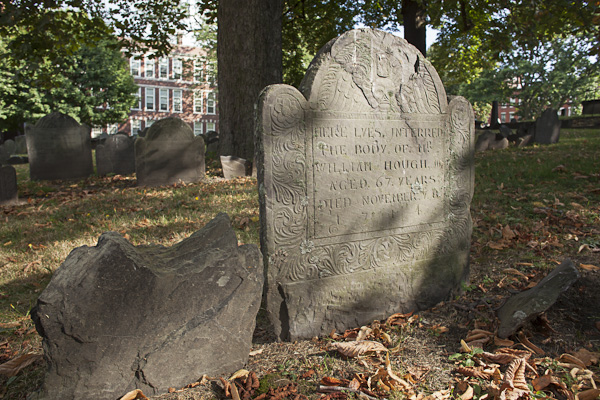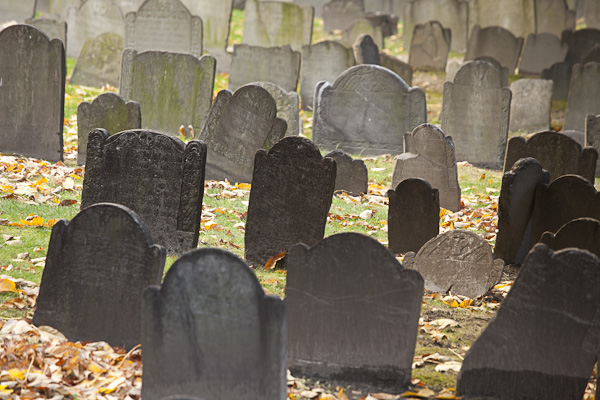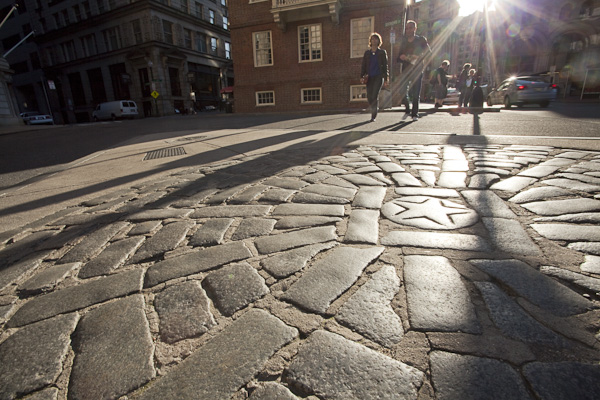In 1635, Boston established the first “public” Latin or Grammar School in America, resolving that Philemon Purmont, a shopkeeper, “be entreated to become a schoolmaster for the teaching and nourtering of the children with us.” The original Latin School was demolished in 1844 to make way for City Hall. This plaque decorates the sidewalk nearby.
Tag Archives: Park Street Church
Copps Hill Burying Ground photo
Boston Common photo
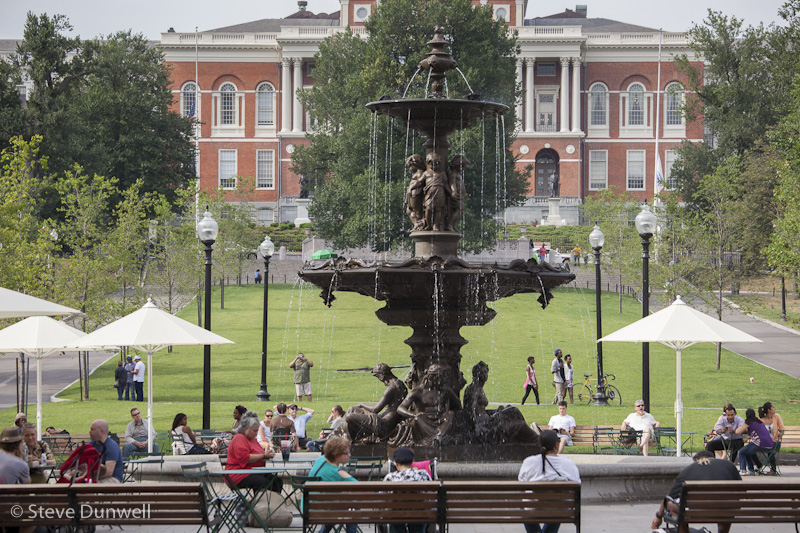 British troops bivouacked on the Boston Common from 1758 to 1776, when George Washington forced them out, demolished their trenches, and sent them packing with loyalists to Nova Scotia. Cast in Paris in 1868, the Fountain was donated by Gardner Brewer and named for him. The fountain was restored in 2009-2010.
British troops bivouacked on the Boston Common from 1758 to 1776, when George Washington forced them out, demolished their trenches, and sent them packing with loyalists to Nova Scotia. Cast in Paris in 1868, the Fountain was donated by Gardner Brewer and named for him. The fountain was restored in 2009-2010.
USS Constitution bicentennial stamp photo
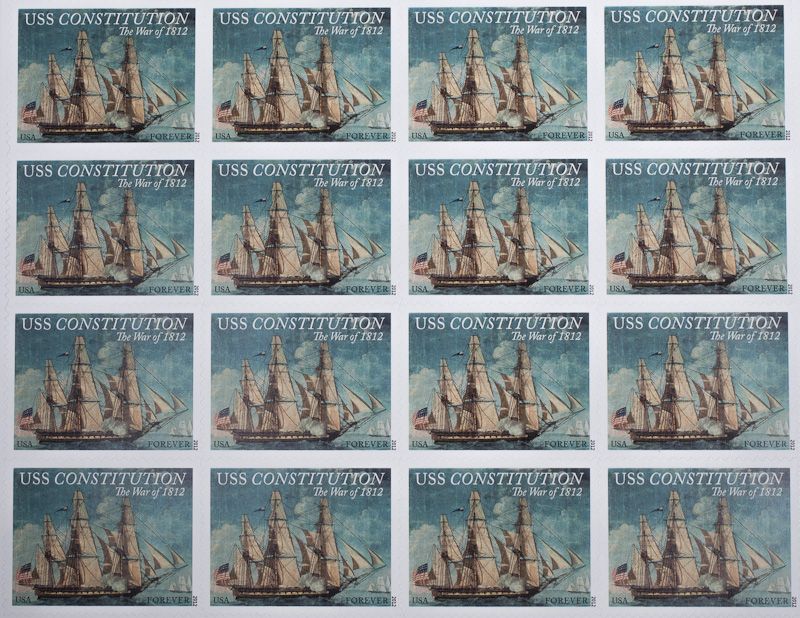 200 years ago today, “USS Constitution” fought and defeated “HMS Guerriere,” a British frigate taken from the French. Commanded by Isaac Hull, “Constitution” dominated the British ship, shot away her mizzen mast, took the crew prisoner, and burned the wreck. This commemorative stamp was issued yesterday.
200 years ago today, “USS Constitution” fought and defeated “HMS Guerriere,” a British frigate taken from the French. Commanded by Isaac Hull, “Constitution” dominated the British ship, shot away her mizzen mast, took the crew prisoner, and burned the wreck. This commemorative stamp was issued yesterday.
USS Constitution Bicentennial sailing photo
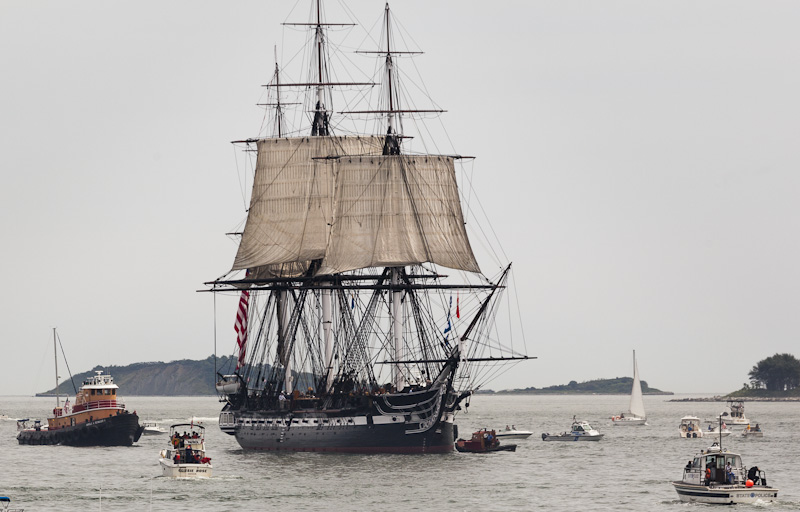 200 years ago today, USS Constitution fought and defeated HMS Guerriere, a British frigate taken from the French. Commanded by Isaac Hull, “Constitution” dominated the British ship, shot away her mizzen mast, took the crew prisoner, and burned the wreck. Today, “Old Ironsides” took a bicentennial turn around the harbor and put her sails up in tribute to this glorious victory. This short sail was only the 2nd time in over 100 years that the ship has been underway on her own.
200 years ago today, USS Constitution fought and defeated HMS Guerriere, a British frigate taken from the French. Commanded by Isaac Hull, “Constitution” dominated the British ship, shot away her mizzen mast, took the crew prisoner, and burned the wreck. Today, “Old Ironsides” took a bicentennial turn around the harbor and put her sails up in tribute to this glorious victory. This short sail was only the 2nd time in over 100 years that the ship has been underway on her own.
Old State House photo Boston
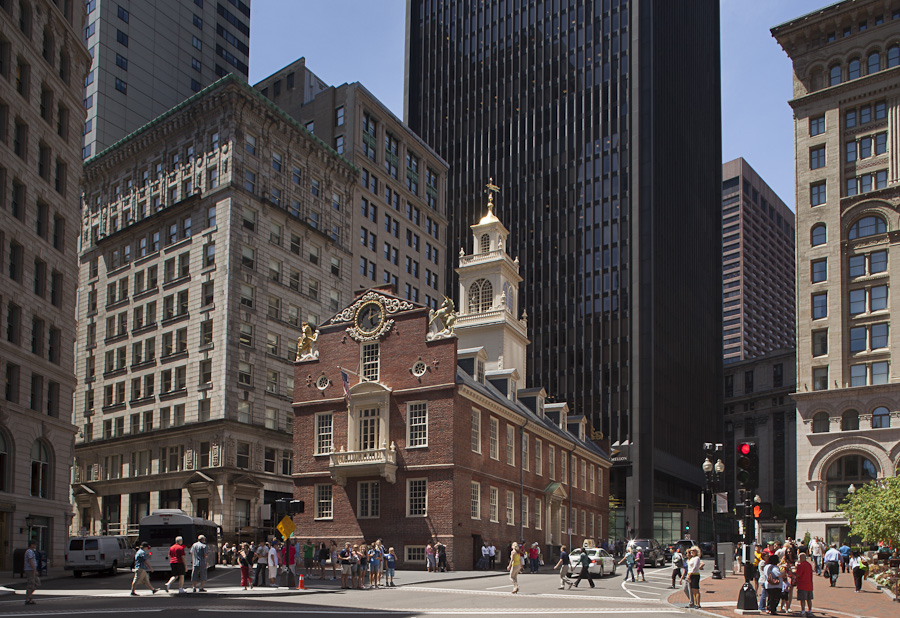 Boston’s oldest public building, erected in 1713 overlooking Long Wharf, replaced an old wooden Town House dating from 1658. After the Great fire of 1711, the town financed a brick building with a room for the Elder’s meeting, a library, an arsenal, and an arcaded farmers’ market “for the country people that come with theire provisions…to sitt dry and warme both in colde raine and durty weather.” It became the hub of the colony’s trade.
Boston’s oldest public building, erected in 1713 overlooking Long Wharf, replaced an old wooden Town House dating from 1658. After the Great fire of 1711, the town financed a brick building with a room for the Elder’s meeting, a library, an arsenal, and an arcaded farmers’ market “for the country people that come with theire provisions…to sitt dry and warme both in colde raine and durty weather.” It became the hub of the colony’s trade.
Paul Revere House photo
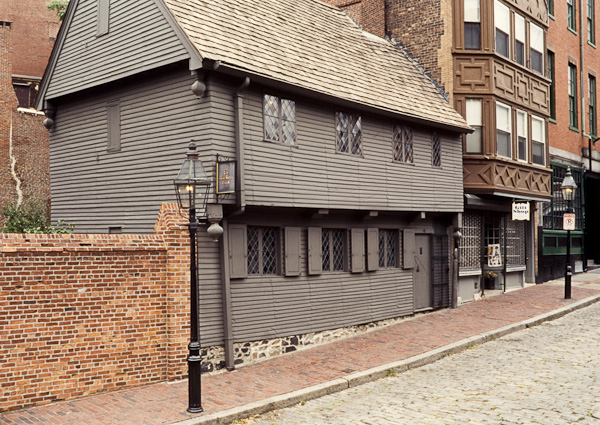 Built in 1681, this is the oldest residence extant in Boston. Paul Revere, prospering as a silversmith, bought it for 214 pounds in 1770. The Revere’s bedroom probably occupied the front of the second floor. Other rooms in the rear of the house and on the third floor provided space for the many children borne by Revere’s two wives.
Built in 1681, this is the oldest residence extant in Boston. Paul Revere, prospering as a silversmith, bought it for 214 pounds in 1770. The Revere’s bedroom probably occupied the front of the second floor. Other rooms in the rear of the house and on the third floor provided space for the many children borne by Revere’s two wives.

